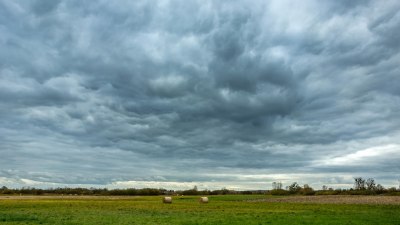How a Gentle Breeze Can Solve Problems That Therapy Hasn’t Yet Touched
Explore the therapeutic benefits of nature and how gentle breezes can aid in emotional healing.

Image by lookstudio on Freepik
In an age where mental health awareness is at an all-time high, many individuals turn to traditional therapy as a means of addressing their emotional and psychological challenges. While therapy can be highly effective for many, not all problems can be effectively resolved through talk alone. As a complement to these methods, nature offers a simple yet profound remedy. This article explores how a gentle breeze can solve problems that therapy hasn’t yet touched.
The connection between nature and mental health is well-documented. Natural environments provide a serene backdrop that can enhance our mental state and contribute to overall well-being. The sensation of a gentle breeze is one of those understated yet powerful aspects of nature that can spark joy and tranquility within us. But how exactly does this simple experience translate into emotional healing?
The Science Behind Nature and Mental Health
Numerous studies have shown that spending time in nature can significantly reduce stress, enhance mood, and improve overall mental health. Research conducted by Ulrich et al. highlights the effect of green spaces on human health, suggesting that exposure to nature not only promotes physical well-being but fosters positive psychological states as well. A gentle breeze, as a manifestation of nature, can be associated with fresh air, sensory pleasure, and an overall feeling of peace.
When we think of a safe haven, we often envision scenes where we can breathe deeply, where the air is clean, and where we feel at ease. A gentle breeze can help facilitate this experience. The cool touch on our skin, paired with soft sounds of rustling leaves, can serve as a reminder of life’s simplicity and beauty, promoting mindfulness and grounding.
The Sensory Experience of a Gentle Breeze
Engaging our senses plays a crucial role in emotional health. When a gentle breeze sweeps through, it engages the sense of touch in a delightful manner. This sensory interaction serves to distract our minds from troubling thoughts, inviting us to focus instead on the physical sensations that nature provides. Feeling the breeze against one’s skin is akin to a soft whisper from the universe, encouraging us to relax and be present—a form of mindfulness that is often hard to achieve in our busy lives.
Sensory experiences, such as the feeling of a breeze, help activate the parasympathetic nervous system. This is the part of our nervous system responsible for promoting relaxation and recovery. A gentle breeze, infused with the refreshing scents of nature, also stimulates our sense of smell, which can trigger positive memories and associations, boosting our mood even further.
As we journey through life, we inevitably encounter challenges that can hinder our emotional well-being. Issues such as stress, anxiety, and depression often require a multifaceted approach for resolution. While therapy provides an excellent framework for understanding and addressing these challenges, it’s not uncommon for clients to still feel a sense of unrest. This is where simple interactions with nature, like experiencing a gentle breeze, can become integral to the healing process.
For many, therapy can sometimes feel isolated or structured—a process that involves sitting in a clinical setting and communicating one’s trauma or struggles. However, stepping outside and experiencing nature’s elements allows for a different type of emotional release. People often find that being outside, coupled with the feel of the wind on their face, provides them with a much-needed respite from the rigors of mental health challenges.
Incorporating Nature into Therapeutic Practices
Recognizing the therapeutic value of nature, mental health professionals are increasingly incorporating outdoor activities into their practice. Nature therapy, known as ecotherapy, encourages clients to engage with the outdoors while addressing mental health issues. This method can involve guided walks in parks, engaging in outdoor yoga, or simply sitting in a garden and allowing the breeze to provide comfort.
Many therapists advocate for “nature therapy sessions,” where discussions can take place in more welcoming, natural environments instead of office settings. Clients are encouraged to connect with their surroundings, be it by watching the leaves flutter or feeling the sun’s warmth, while talking about their feelings and thoughts. These sessions allow for a dynamic approach, where the gentle breeze serves both as a calming force and a conversation partner, easing the intensity of difficult discussions.
The Symbolism of a Gentle Breeze
A gentle breeze also carries symbolic meaning often found in literature and philosophy. It represents change, flow, and the ability to let go. Life is constantly changing, and the breeze reminds us of its transient nature. Just as the wind shifts direction, we too can change our trajectories and embrace new possibilities.
In many cultures, wind is seen as a messenger, a force that carries our hopes and intentions across the universe. Meditating on a gentle breeze can be a metaphor for breathing through life’s challenges—learning to release what no longer serves us and moving forward buoyed by rejuvenated energy.
One of the remarkable advantages of a gentle breeze is its accessibility. It requires no equipment, training, or even significant time investment. A few moments spent outdoors with your face into the wind can offer clarity and perspective you may not find while confining yourself within four walls. This spontaneous encounter with nature can uplift one’s mood and reduce feelings of frustration and melancholy.
Furthermore, the ease of access to a gentle breeze allows it to enhance our daily lives. Incorporating simple breaks outdoors or scheduling time for a stroll in the park can serve as a conducive practice for mental health. Notably, this does not have to be a lengthy engagement; even a brief encounter can yield substantial benefits.
Tips for Harnessing the Power of Gentle Breezes
To effectively embrace the soothing impact of a gentle breeze, consider the following strategies:
- Mindful Breathing: Find a quiet outdoor space and practice deep breathing while enjoying the breeze. Focus on inhaling the fresh air and exhaling any tension you may hold.
- Nature Walks: Make walking outside a routine. Pay attention to how the breeze feels as you walk. Use this time to reflect on thoughts or simply enjoy the moment.
- Grounding Techniques: Sit or stand barefoot in the grass, letting the breeze envelop you. This practice is deemed grounding and helps to connect you with the earth.
- Outdoor Meditation: Commit to meditating outside with the breeze as background music. This can deepen your relaxation and help clear your mind.
- Journaling in Nature: Bring a journal outdoors when you feel overwhelmed. Write your thoughts while allowing the breeze to work its magic.
While therapy is an invaluable tool for addressing mental health issues, supporting healing through the natural world can yield profound results. A gentle breeze may seem like a small element, yet its impact can facilitate emotional recovery in ways that structured therapeutic environments sometimes cannot. By integrating moments of nature into our healing practices, we open ourselves to fresh perspectives, unburdened by the weight of conventional constraints. Nature, with all its simplicity, has a powerful ability to enrich our experiences—reminding us that sometimes, the gentlest touches are what we most need to heal thoughtfully.











